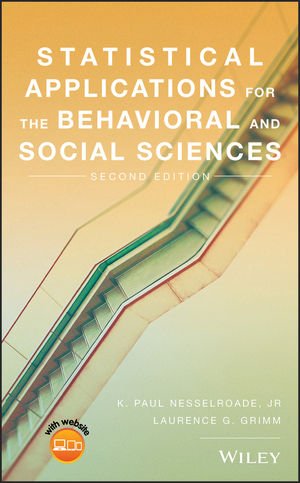(Essay found in Nesselroade & Grimm, 2019; pgs. 596 – 597)

Francis Galton (1822–1911) is credited with developing the concepts of correlation and regression, although his understudy, Karl Pearson, was responsible for many of the mathematical underpinnings of correlation. Galton led a full and varied life. Born into a wealthy English family, he was afforded the luxury of indulging his scientific curiosities. In the mid-1800s, European explorers were mapping the interior of Africa. Perhaps inspired by the travels of his prodigious cousin, Charles Darwin, Galton departed for Africa at the age of 28. His maps of unknown regions of Africa were published, for which he received a Gold Medal from the Geographical Society. For the next few years, Galton dabbled in geography and meteorology. He coined the term anticyclone, invented three-dimensional weather maps, and even invented spectacles that could be used to read underwater (they did not sell well).
Galton was intellectually gifted and preoccupied with measurement. All throughout life, he zealously counted things. Once, when attending a lecture, he counted the number of fidgets per minute of members of the audience, and looked for variation as a function of audience attentiveness versus boredom. His observations were published in Nature (Galton, 1885). While his portrait was being painted, he counted the number of brush strokes in an hour. Multiplying by the number of hours it took to paint his portrait, he estimated the total number of strokes at 20,000. (Contemporary clinicians might wonder if Galton suffered from obsessive-compulsive disorder.)
Without question, the greatest influence on Galton’s work was Darwin’s Origin of Species, published in 1859. The mature years of Galton’s career were devoted almost entirely to the quantification of heredity. This work led to the development of statistical tools such as correlation and regression. He established the Anthropometric Laboratory and collected thousands of observations on physical and mental attributes, many from parents and their offspring. Indeed, Galton is viewed as the father of biometrics,the quantitative aspect of biology, as well as the father of mental testing. Galton’s book, Hereditary Genius (1869), put forth the belief that intelligence is inherited. His evidence was based primarily on studies that counted the number of eminent people who also had eminent relatives, an admittedly weak methodology by today’s standards. In trying to find a quantitative method for showing a link between cross-generational abilities, he came upon the ideas of correlation and regression. Galton had collected data on the heights of parents and their children and had drawn a graph with the average of the parents’ heights on one axis and the height of their child on the other axis. However, he was unable to arrive at a suitable method for statistically relating the two distributions. Galton wrote in his autobiography of the moment in which he was struck by the solution to his problem.
“But I could not see my way to express the results of the complete table in a single formula. At length, one morning, while waiting at a roadside station near Ramsgate for a train, and poring over the diagram in my notebook, it struck me that the lines of equal frequency ran in concentric ellipses (Galton, 1908, p. 302).“
The insight that “struck” Galton was the bivariate normal surface; that is, the infinite series of conditional distributions depicted in the text of this chapter. Galton’s discovery of correlation and regression has revolutionized the fields of biology and the social sciences.
Galton’s abiding belief in the inheritance of physical, mental, and, in fact, moral attributes led him to begin a movement to better the human race through selective breeding, which he called eugenics, meaning “good birth.” To be fair to Galton, there is little evidence he could foresee where his ideas might lead. At the time, however, it held great appeal for many of the brightest scientists and writers of the era. Karl Pearson, Sir Ronald Fisher, George Bernard Shaw, Teddy Roosevelt, Winston Churchill, and George Orwell were just some of the prominent and ardent supporters of the eugenics movement. However, the sorrowful story of eugenics in America includes political actions endorsing forced sterilizations and marriage restrictions for the poor, ethnic minorities, and the handicapped; immigration laws restricting entry to peoples from certain parts of the world, and even more well-documented horrific and drastic measures undertaken by German scientists (e.g., Lifton, 2000) and politicians (e.g., Kuhl, 1994) in Nazi Germany. There is simply no positive spin that can throw into better light this darkest chapter of modern scientific reasoning. However, we can say that despite the evils that emerged from the resonance of Galton’s utopian ideal, the techniques he invented for exploring the world around us have revolutionized the quantitative aspects of many disciplines in the social and behavioral sciences.
Find this and other spotlights on important statisticians in the Nesselroade & Grimm textbook.
Galton, F. (1869). Hereditary genius: Its laws and consequences. New York: Appleton.
Galton, F. (1885). The Measure of Fidget. Nature, 32, 174–175.
Galton, F. (1908). Memories of my life. (2nd ed.). London: Methuen.
Kühl, S. (1994). The Nazi Connection: Eugenics, American racism, and German national socialism. New York: Oxford University Press.
Lifton, R. J. (2000). The Nazi doctors: Medical killing and the psychology of genocide. New York: Basic Books.